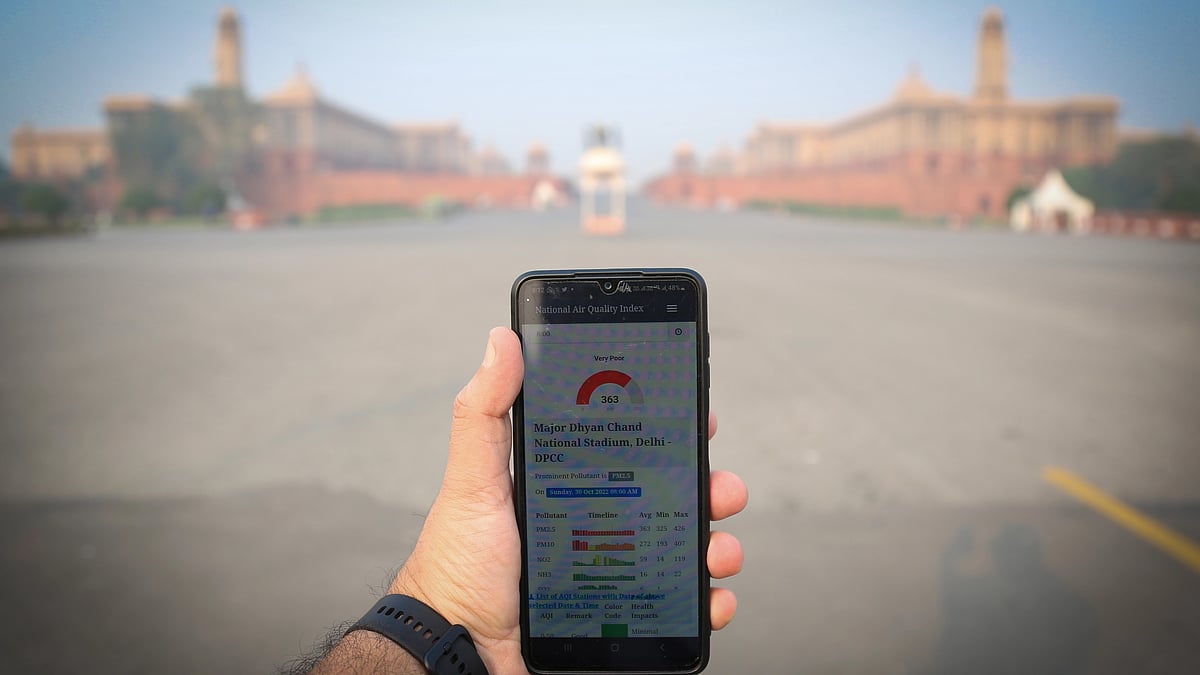Nation
Centre enforces GRAP-1 restrictions in Delhi-NCR as air quality slides to 'poor'
Authorities have been instructed to intensify road cleaning and watering to reduce dust generation, enforce strict bans on open burning of waste and regulate construction debris management

On Tuesday, the Centre’s CAQM (Commission for Air Quality Management) ordered authorities in Delhi and the adjoining National Capital Region to enforce Stage I measures under the GRAP (Graded Response Action Plan) effective immediately.
This decision follows the AQI (Air Quality Index) for Delhi being recorded at 211 on Monday, categorising the air quality as 'poor'.
Forecasts by the India Meteorological Department and Indian Institute of Tropical Meteorology indicate pollution levels are likely to remain in this range for the coming days.
Delhi’s AQI, which fluctuates seasonally, is measured across a scale where values between 201 and 300 fall into the “poor” category, triggering the first level of pollution control measures under GRAP. The plan defines four escalating stages based on AQI severity: Stage I (Poor, 201-300), Stage II (Very Poor, 301-400), Stage III (Severe, 401-450), and Stage IV (Severe Plus, over 450).
Stage I measures in effect
Under Stage I guidelines, the authorities have been instructed to intensify road cleaning and watering to reduce dust generation, enforce strict bans on open burning of waste, regulate construction debris management, and encourage the use of public transportation.
These steps aim to curb pollution sources that contribute heavily to Delhi-NCR’s deteriorating air quality, especially after the onset of winter.
The CAQM stated it will keep close watch on weather conditions and pollution data and is prepared to recommend stricter measures if required.
Published: undefined
Causes and health impact
Delhi’s winter pollution woes result from a combination of unfavourable meteorological conditions—such as low wind speeds and temperature inversions—alongside human-made sources including vehicular emissions, stubble burning in neighbouring states, fireworks, and construction dust.
Doctors caution that inhaling Delhi’s polluted air carries health consequences comparable to smoking about 10 cigarettes daily. Prolonged exposure raises the risks of respiratory illnesses such as asthma, bronchitis, and chronic obstructive pulmonary disease, while also markedly increasing vulnerability to cardiovascular diseases.
Residents and commuters are urged to exercise caution, limit outdoor activities, and adopt protective measures such as using masks and air purifiers where feasible.
Outlook and ongoing monitoring
Data from the Central Pollution Control Board and other monitoring systems indicate that the average AQI values fluctuate but display a seasonal upward trend as winter advances.
Delhi experienced a rare period of improved air quality during the monsoon but pollution levels have started rising again with changing weather patterns.
Forecasts for the next several days continue to predict the AQI hovering within the poor bracket, with possibilities of reaching very poor levels if meteorological conditions remain unfavourable.
The CAQM and related agencies remain vigilant to respond by scaling GRAP measures to safeguard public health and improve overall air quality.
Published: undefined
Follow us on: Facebook, Twitter, Google News, Instagram
Join our official telegram channel (@nationalherald) and stay updated with the latest headlines
Published: undefined